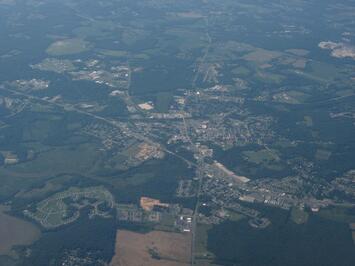
In earlier times, even with a soaring population, Americans knew how to accommodate housing demand. In the eighteenth and nineteenth centuries we built cities from scratch along the frontier. The existing major urban centers—Boston, New York, Baltimore, Philadelphia—all expanded rapidly, both by density and expansion into land on the periphery.
After the Second World War, mass suburbia and its expansion in homeownership ushered in a period of sustained prosperity that lasted until the 1970s. After 1940, according to the U.S. Census Bureau, U.S. homeownership rates grew rapidly, from 44 percent to 63 percent over the next three decades.
But now, in many places, it is exceedingly difficult, even impossible, to build the kind of family-friendly housing long sought by most Americans. Instead we are being left with two negative trends: increasingly low housing affordability for many, and the forced march of a whole new generation into the kind of small, crowded spaces they generally eschew, particularly after they enter their thirties.
The Suburbs Are the Urban Cutting Edge
When academics and the media focus on urban innovation, they tend to look at cities. But the real action—and the best guides to the future—lie with the suburbs. Between 2010 and 2020 the suburbs and exurbs of the major metropolitan areas gained two million net domestic migrants, while the urban core counties lost 2.7 million. Americans have been heading to the suburbs for generations, growing from 13 percent of the metropolitan population in 1940 to 86 percent in 2017, a gradual increase of 2 percent annually.
Exurbs, the locale for most new innovative development, have grown in population at twice the national rate for over a decade. This is where we see the rise of new, privately designed and financed models for building better, more affordable, and even environmentally friendly communities. The technology for creating such communities extends back to the early visions of Frederick Law Olmsted and Britain’s Ebenezer Howard, who originated the idea of “garden cities,” essentially exurban communities where people could work, recreate, and live in the same environment.
These new cities consciously rejected the old suburban notion of serving the central city. Communities like Irvine, south of Los Angeles, function more as job and retail centers than adjuncts to an urban core. The 300,000 residents tend to work more at home, commute less, and have more access to open space than most metropolitan communities.
Irvine epitomizes a historical shift from the suburban “bedroom” model of the 1950s—in communities like Lakewood in the Los Angeles metro area and the Levittowns in Pennsylvania and on Long Island—that provided inexpensive housing for workers in nearby plants and downtowns. The new urban legacy owes much to visionaries like Irvine’s William Pereira, the Woodlands founder George Mitchell, and Columbia’s James Rouse. These communities, suggests Harvard’s Ann Forsyth, fulfilled most of today’s New Urbanists’ underlying aim, and they did so at a grand scale exhibiting “cutting-edge planning and design strategies.”
Read the rest of this piece at American Mind.
Joel Kotkin is the author of The Coming of Neo-Feudalism: A Warning to the Global Middle Class. He is the Roger Hobbs Presidential Fellow in Urban Futures at Chapman University and Executive Director for Urban Reform Institute. Learn more at joelkotkin.com and follow him on Twitter @joelkotkin.
Photo: Ken Lund via Flickr CC 2.0 License.












